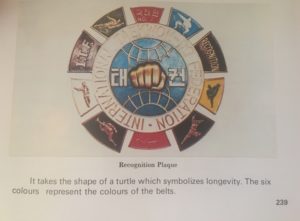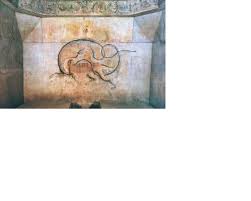
International Taekwon-Do Federation (ITF) Recognition Plaque is one of the instructor’s most treasured items received from the I.T.F. or at least it use to be right next to the ITF certificate of black belt. It has hung in the training halls (dojangs 도장/道場) of some of the world’s greatest instructors, masters, and grandmasters. Grandmaster Lee, Haeng-ung (이행웅/李幸雄) and his Omaha, Nebraska Korean Karate which he formed in 1963 and later joined the ITF in 1966 and he remained an ITF active member until the American Taekwondo Association became more organized and larger than the ITF and changing their style of Taekwon-Do from the Chang-Hon aka ITF using the patterns such as Chon-Ji, etc, to their SongAhm Taekwondo system and having no instructors with ITF ties by 1983 after General Choi, went to the DPRK/North Korea in 1980. Another ITF grandmaster who had the esteemed Recognition Plaque was Rhee, Joon-go (이준구/李俊九), and displayed it until he split from the ITF in the mid-1970s because in part his involvement with the “Moonies” and also because of General Choi’s outreach to the DPRK which was evident in the mid-1970s. Then you have Grandmaster Kim, Suk-jun, Park, Jong-soo, Park, Jung-Tae, Park, Jung-taek, Hwang, Kwang-sung, Grandmaster Charles Sereff, Grandmaster Gwen F. Hall (one of the early female senior black belts in the ITF) and so many more.
But, why was the Recognition Plaque designed in such a way? Why was so little ever discussed other than the two-sentence statement in the ITF 15 volume encyclopedia or the Condensed version where it: “It takes the shape of a turtle which symbolizes longevity. The six colors represent the colors of the belts.”
But why the shape or significance of a turtle? Yes, in most cultures and anyone who knows about turtles in general, they do tend to live a long life so represent longevity. As many may know, the 1st President and founder of the ITF, Choi, Hong-hi was always heavily influenced by Korean history and iconography as well.
The turtle or tortoise in Korean history goes back several thousand years and has a long documented history with the Korean peninsula and its people. The turtle is one of four evil-repelling protectors for the four directions North, East, South, and West with the turtle representing the North and one reason why the recognition plague was to be at the head of the dojang and traditionally the “north”. The other “protectors” are the Dragon (east), the Phoenix (south), the Tiger (west), and of course the turtle (north).

From the very beginning of Korean folklore, the turtle protected against evil from a northern direction. In early Koguryo murals, the turtle is always shown entwined with a snake. The turtle represents the color black and among Korean folktales is the idea that if a woman dreams of a black turtle, she will have a son and he will rise to occupy a high office.
![]()

